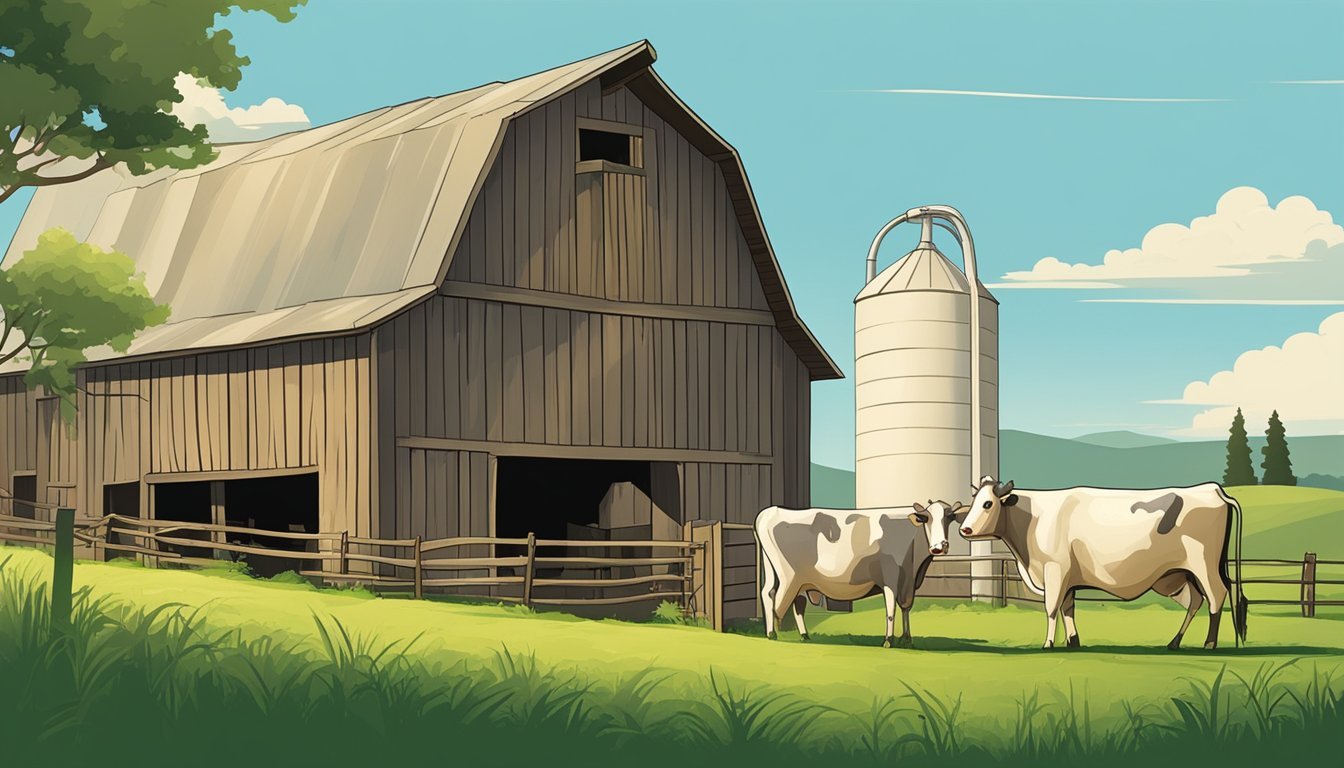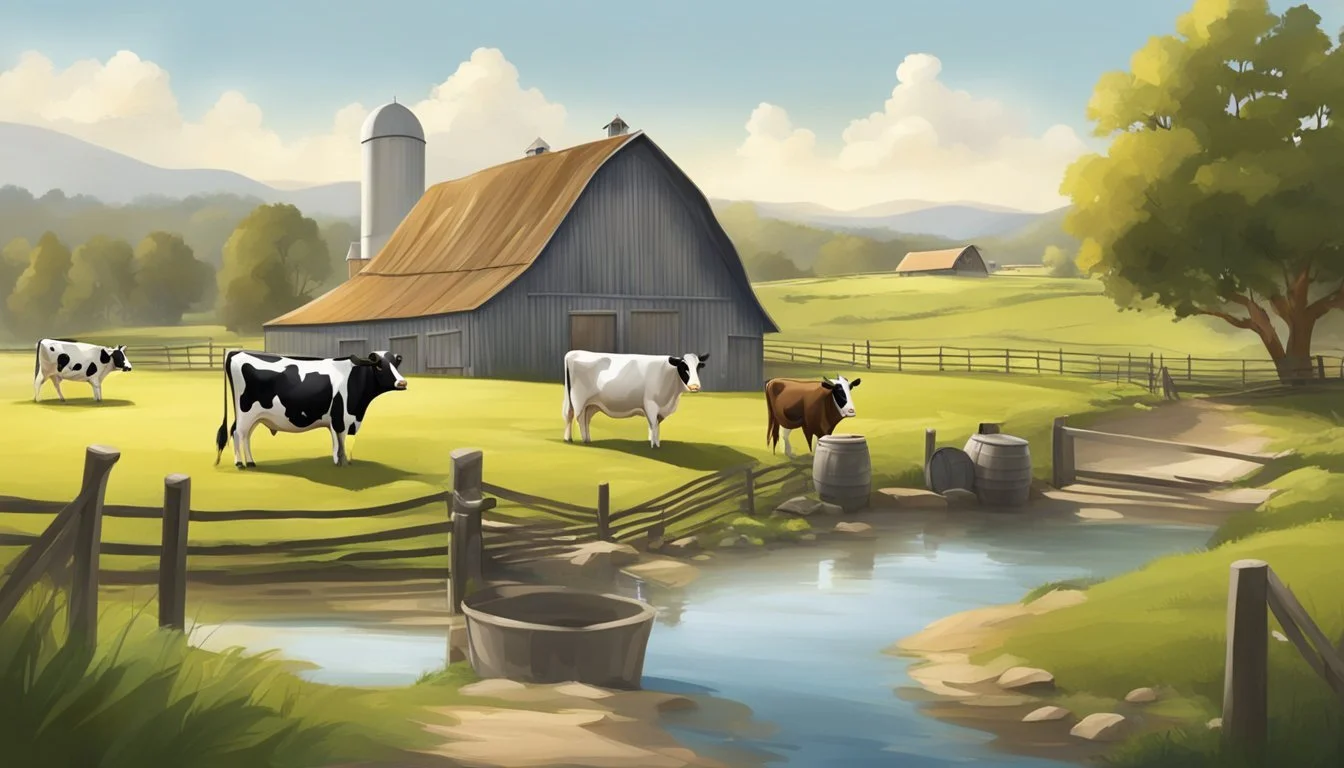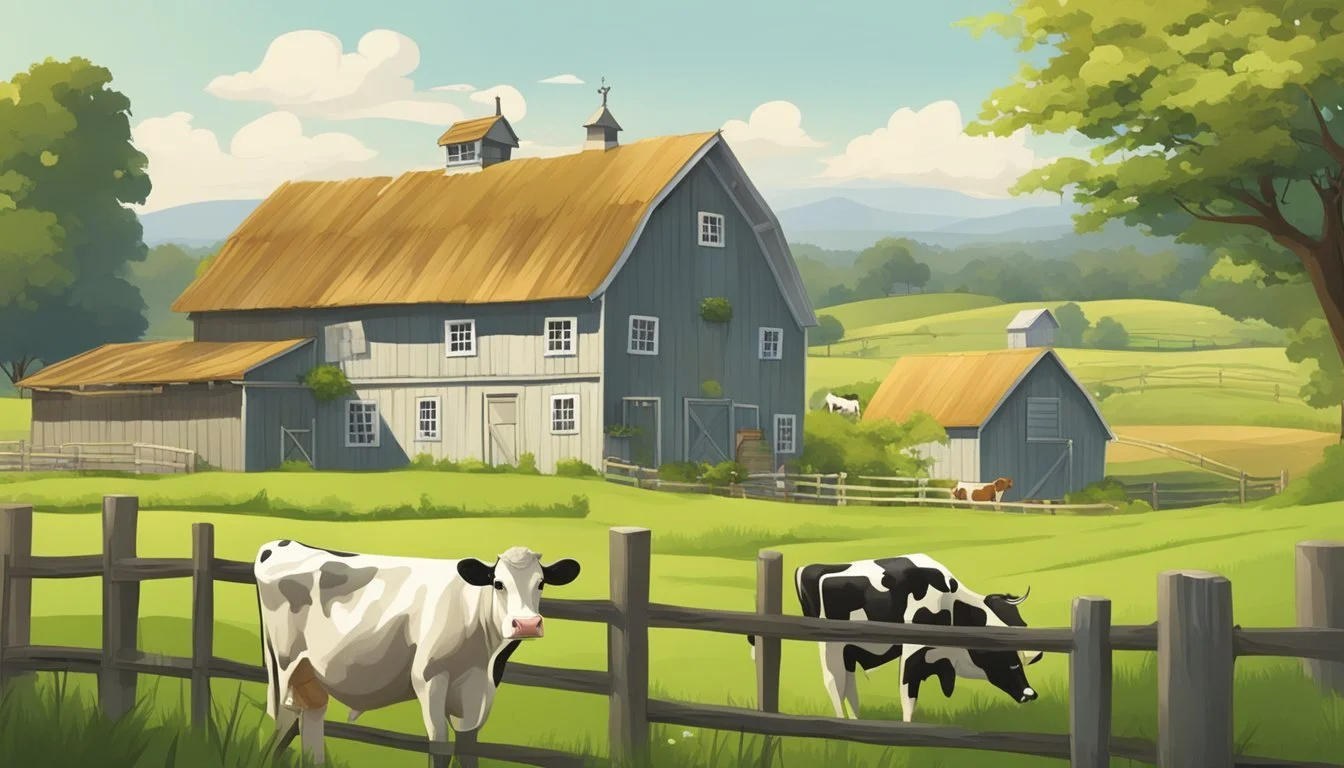The Taste of Tradition
Exploring the Unique Profile of Raw Milk's Flavor
Milk, in its purest form, directly from the cow, possesses a sensory profile that pasteurized milk simply cannot replicate. This unadulterated version, known as raw milk, carries the taste of tradition within every sip. Freshness and a symbiosis with the local environment give raw milk a rich, creamier, and subtly sweet flavor that is often described as more complex than that of its processed counterpart. Enthusiasts of raw milk argue that it's not just a beverage but a full culinary experience, with nuances that reflect the diet of the cows, such as grass, and the seasonality of their feeding habits.
Historically, milk consumption involved raw, unprocessed milk. However, concerns over bacteria and the demand for longer shelf-life led to the standardization of pasteurization. Despite the safety measures introduced by pasteurizing milk, which prolongs its shelf life and reduces the risk of foodborne illness, a niche market cherishing the vivid taste and purported health benefits of raw milk flourishes. Advocates for raw milk claim that beyond its superior taste, it provides a connection to pastoral traditions and local food systems that have been lost in much of the modern dairy industry.
As the debate between safety and flavor continues, dairy farmers and consumers who prefer raw milk are constantly seeking ways to balance the two. While some regions have strict regulations regarding the sale of raw milk due to safety concerns, its steadfast following underscores a persistent yearning for flavors that are often subdued in mass-produced dairy products. Raw milk inherently challenges the palate with its variable and regionally specific flavors—an unmatched reminder of the diversity and heritage of traditional dairy farming.
Experience the enchanting allure of The Taste of Tradition and embark on a journey to rediscover the timeless flavors and culinary heritage associated with raw milk. This captivating exploration goes beyond the ordinary, offering a glimpse into the rich tapestry of raw milk culinary education and the myriad of delectable creations it inspires.
From the art of raw milk soap making to the indulgence of raw milk homemade ice cream, every endeavor showcases the boundless potential of raw milk in crafting artisanal products that tantalize the taste buds and nourish the soul.
Delving into the world of raw milk not only promises gastronomic delights but also sheds light on its positive environmental impact. By supporting sustainable practices and local producers, one can savor the flavors of tradition while contributing to a healthier planet.
For those eager to embrace the essence of tradition, avenues such as raw milk vending machines and raw milk co-op guide provide gateways to a world where the past and present converge to create a harmonious culinary experience. Uncover the magic of The Taste of Tradition and let the flavors of raw milk transport you to a realm where time-honored practices and exquisite tastes intertwine to create an unforgettable epicurean odyssey.
Historical Significance of Raw Milk
In considering the value and uniqueness of raw milk, one must reflect on its enduring presence in culinary history and its traditional use across various cultures.
Culinary Roots and Raw Milk
Raw milk holds a venerable position in the culinary domain. It has been an essential component of human diets for millennia since the domestication of cows, goats, and other milk-producing animals. The nuances of its flavor and texture were well appreciated in historic times when pasteurization was undiscovered. Traditionally, cow milk was consumed in its most natural form across many societies, valued for its freshness and nutritional richness.
Global Traditions of Unpasteurized Milk
Globally, various cultures have cherished the taste of unpasteurized milk, incorporating it into their diets and daily rituals. In parts of Europe, for instance, there existed vivid traditions of consuming raw milk directly from the cow as part of a rural lifestyle. This practice symbolized a connection to the land and the cycles of nature.
Sweden and Denmark: Took to commercial pasteurization in the 1880s; yet, the penchant for raw milk's richness remained.
Chicago, USA: Saw its first law mandating pasteurization in 1908 due to safety concerns, though opposition was widespread due to raw milk's esteemed taste.
Undeniably, raw milk's flavor is deep-rooted in the annals of history and the gastronomic tapestry of different civilizations.
Raw vs. Pasteurized Milk
In the debate between raw and unpasteurized milk, discussions often focus on the differences in flavor, health impact, and nutritional content. Understanding these differences can help consumers make informed choices about their dairy consumption.
Defining Raw and Pasteurized Milk
Raw milk is milk that comes straight from the cow without undergoing the pasteurization process. It retains its natural enzymes, proteins, and bacteria. Pasteurized milk, on the other hand, has been heated to a specific temperature for a set period of time to kill harmful bacteria and extend its shelf life.
The Pasteurization Process
Pasteurization typically heats milk to about 161 degrees Fahrenheit (72 degrees Celsius) for at least 15 seconds. This process reduces the risk of foodborne illnesses, destroys harmful organisms, and it is credited with significantly improving public health. However, it may also alter the flavor, denature proteins, and reduce the levels of certain heat-sensitive vitamins and enzymes.
Flavor: Pasteurized milk often has a more subdued, neutral flavor compared to the richer and sometimes sweeter taste of raw milk.
Enzymes & Proteins: The heating process can denature the proteins and enzymes, potentially changing the milk's natural properties and digestibility.
Nutritional Differences
The nutritional content of milk is another area of comparison. While both raw and pasteurized milk contain essential nutrients like calcium, vitamins, and proteins, some believe the pasteurization process may diminish nutritional benefits.
Vitamins: Certain vitamins, like Vitamin C and some B vitamins, are heat sensitive and can be partially lost during pasteurization.
Health Benefits: Proponents of raw milk argue that it can support a healthier immune system and better digestion due to the presence of beneficial bacteria and enzymes, though these claims are subject to debate and not universally accepted.
It's important to note that while some consumers prefer the taste and perceived health benefits of raw milk, health authorities recommend pasteurized milk to avoid the risk of pathogens that can cause serious illness.
The Complex Flavor Profile of Raw Milk
Raw milk is renowned for its full-bodied flavor and complexity, which are directly impacted by the cow's diet and are distinctly different from pasteurized milk alternatives.
Taste Test Comparisons
When taste-testing raw milk against pasteurized milk, one immediately notices the richer and more intricate flavor profile of raw milk. Pasteurized milk is typically described as having a neutral taste and more uniform texture due to the high-temperature processing it undergoes. In contrast, raw milk's taste can be described as being robust, with a natural sweetness and often a hint of nuttiness. Its texture is creamier, and it might also possess notes indicative of what the cow has been consuming. The color of raw milk might slightly vary, exhibiting richness that mirrors its unaltered state.
Influence of Diet on Flavor
The cow's diet plays a pivotal role in shaping the taste of raw milk. Studies indicate that the flavors of grass, hay, and the natural environment are often discernible in raw milk. These elements contribute to the unique taste that differentiates it from the pasteurized variant. The presence of slightly higher sugar content in raw milk may influence its sweetness and contribute to the overall flavor profile. Additionally, the freshness of raw milk is an essential determinant of flavor, emphasizing the value of consuming it closer to the time of milking.
Health and Safety Considerations
Navigating the delicate balance between the rich flavor of raw milk and the potential health risks involves a deep understanding of the microorganisms present in milk and the regulations in place to manage them.
Beneficial and Harmful Bacteria
Raw milk hosts a variety of bacteria; some are probiotics, beneficial to human health, while others can be hazardous. Good bacteria contribute to milk's flavor and may offer a range of health benefits, including improving gastrointestinal health. However, raw milk can also harbor harmful pathogens like E. coli, listeria, and other milk-borne diseases which pose significant health risks.
Health Benefits and Risks
While proponents argue that raw milk contains more probiotics and nutrients, it can also contain microorganisms that lead to illness. Consuming raw milk has been associated with serious health risks, especially for immuno-compromised individuals, including infections caused by E. coli, listeria, and salmonella.
Safety Regulations and Best Practices
To minimize health risks, strict safety regulations govern the sale and consumption of raw milk. Best practices include rapid cooling and proper storage to limit microbial growth, and adhering to guidelines around cleaning and inspection of dairy farms. Consumers should always source raw milk from reputable producers that follow these regulations diligently.
The Role of Raw Milk in Traditional Recipes
In traditional recipes, raw milk is prized for its rich flavor and the natural enzymes it contains. These contribute significantly to processes like fermentation and influence the final taste and texture of food products such as cheeses and baked goods.
Fermentation and Cheese Making
Fermentation is a process where microorganisms such as bacteria and yeast convert organic compounds into alcohol or acids, imparting a distinct flavor and texture to food. In cheese making, raw milk provides a wealth of natural cultures, which are crucial in developing the unique taste and consistency of traditional cheeses. The fermentation process with raw milk can yield a complexity in cheese that pasteurized milk often cannot match. Artisanal cheese producers value raw milk for the following reasons:
Complex flavors: The varieties of grass and feed consumed by the livestock affect the milk's taste, leading to sophisticated flavor profiles in the cheese.
Natural cultures: Beneficial bacteria present in raw milk contribute to the fermentation, enhancing the cheese's depth and richness.
Raw Milk in Baking and Cooking
Raw milk's fat content and freshness deliver moisture and richness to baked goods, which can be particularly appreciated in recipes that originated from times when pasteurization was not the norm. Many traditional bakeries and cookbooks call for raw milk due to its ability to:
Enhance flavor: The natural sweetness and creamy texture of raw milk improve the taste and mouthfeel of baked products.
Maintain consistency: In cooking, the stability provided by raw milk’s fat is essential for creamy sauces and custards.
In the context of specific diet trends such as keto, which focuses on high-fat, low-carbohydrate foods, raw milk can play a supportive role due to its fat content, which is not only key for energy in such diets but also for carrying flavors and contributing to the overall sensory experience of traditional culinary creations.
Production and Farming Practices
The distinct flavor of raw milk cheese arises directly from the production methods and the quality of care at the dairy farm. The production practices, whether organic or conventional, as well as the farming ethos, play pivotal roles in developing the unique taste profile of raw milk.
Organic Versus Conventional Milk Production
Organic milk production emphasizes the use of natural resources and maintaining ecological balance. Organic dairy farms must adhere to strict guidelines, such as avoiding synthetic pesticides and antibiotics. Organic milk often comes from farms that practice rotational grazing, where cows feed on grass, which can impart a complex flavor to the milk. In contrast, conventional dairy milk is produced on farms that may use a variety of agricultural chemicals and growth hormones. The Weston A. Price Foundation advocates for the consumption of milk with high nutrient density, which is often found in milk from grass-fed cows on organic farms.
Farming Ethos and Animal Care
Farming ethos reflects the core values and practices guiding a dairy farm's operations. It includes a commitment to animal welfare, sustainable farm management, and the quality of milk produced. Farms that prioritize animal care ensure their cows have plenty of outdoor grazing time, obtain necessary veterinary attention, and live in a stress-free environment. The quality of milk—and consequently, the flavor of raw milk cheese—is influenced by the cows' diet, their living conditions, and the overall happiness and health of the herd.
Economic and Availability Factors
The economic landscape of raw milk and its availability are shaped by cost considerations and regulations that vary by region. Consumers' access to raw milk often hinges on these factors.
Cost Comparison
Raw milk typically commands a higher price compared to pasteurized milk due in part to its association with organic practices and the avoidance of growth hormones and antibiotics. For instance, in New York and Pennsylvania, where raw milk is legal to sell, the price can reflect the cost of maintaining smaller-scale, less industrialized farms which prioritize animal welfare and ecological sustainability.
Organic Milk Price: Often higher than conventional due to stricter production standards.
Raw Milk Price: Varies per region; may carry a premium over even organic milk due to direct farming relationships and perceived quality.
Market Availability and Legal Restrictions
The availability of raw milk is tightly controlled by regulations that can differ significantly between states. In New York, farmers can sell raw milk at the farm if they have a permit, while Pennsylvania allows both on-farm sales and retail sales within the state. These legal restrictions influence where consumers can purchase raw milk and underscore the importance of understanding state-specific legislation.
New York: Permit required for on-farm sales.
Pennsylvania: On-farm and select retail sales permitted.
Regulations: Varied across states, impacting accessibility.
Storage, Shelf Life, and Preservation
Proper storage methods extend the shelf life of raw milk while preserving its unique flavor. The temperature and containment of the milk play pivotal roles in maintaining quality and preventing premature fermentation.
Extending Raw Milk's Freshness
To maximize the freshness of raw milk, it needs to be kept at 38°F to 40°F (3°C to 4°C) in a refrigerator. These conditions slow bacterial growth and maintain milk quality. Freezing raw milk is an option for longer storage, though it may slightly alter the texture upon thawing.
Temperature Control: Keep refrigerated immediately after collection.
Sealed Containers: Use airtight containers to protect against contaminants.
Prompt Usage: Consume within 7-10 days to enjoy its best taste.
Impact of Storage on Taste and Quality
Storage conditions directly affect raw milk's taste and quality. Extended shelf life and enhanced flavor can be achieved through rapid chilling, which minimizes pathogen risks. However, unlike pasteurized milk, raw milk lacks the heating process that kills bacteria, meaning careful handling is paramount. Unlike pasteurized milk, which can last 30-45 days, unpasteurized milk has a shorter shelf life and naturally ferments over time, changing its flavor profile.
Consumer Perceptions and Culture
The section explores the intricate relationship between cultural influences and individual preferences, particularly concerning the consumption of raw milk.
Public Views on Milk Consumption
Consumers' attitudes towards milk can vary widely, with taste preferences often influenced by cultural norms and personal experiences. A taste test or a blind taste test can reveal differences in perception, but these preferences are not solely based on flavor. It's the cultural backdrop that shapes the public's views on everything from raw to pasteurized milk, with some cultures historically favoring the taste of raw milk over its processed counterparts.
For example, members of the Weston A. Price Foundation espouse the consumption of raw milk, highlighting its traditional roots and purported health benefits. The Foundation represents a collective that reveres nutrient-rich foods and advocates for the reclamation of traditional diets, which includes the consumption of raw milk.
The Taste of Tradition in Modern Times
The preference for raw milk's flavor can also be seen as a revival of traditional practices in a modern era. Martha Stewart, an icon of contemporary American home living, has occasionally celebrated traditional methods of food preparation, which includes the use of raw milk due to its depth and complexity of flavor.
The taste of tradition is not only an homage to the past but also a critique of the industrialization of food, where the emphasis on efficiency and safety can sometimes overshadow taste and culture. In regions where rain and fall dictate a cyclical way of life, traditional foods such as raw milk remain an integral part of culinary customs and link the present to ancestral practices.





